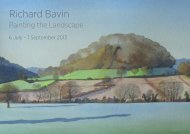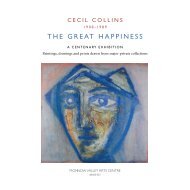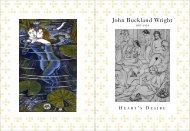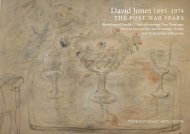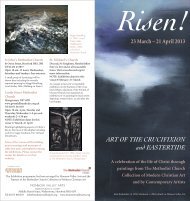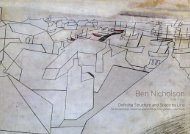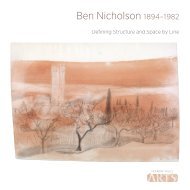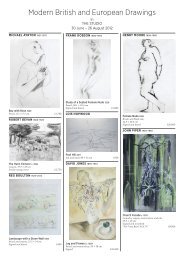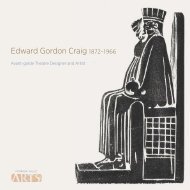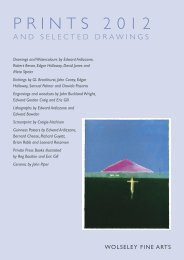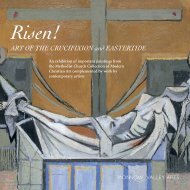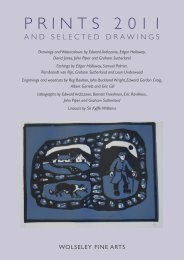The Dodo is Dead: Long Live the Dodo - Monnow Valley Arts Centre
The Dodo is Dead: Long Live the Dodo - Monnow Valley Arts Centre
The Dodo is Dead: Long Live the Dodo - Monnow Valley Arts Centre
Create successful ePaper yourself
Turn your PDF publications into a flip-book with our unique Google optimized e-Paper software.
<strong>The</strong> <strong>Dodo</strong> <strong>is</strong> <strong>Dead</strong>: <strong>Long</strong> <strong>Live</strong> <strong>the</strong> <strong>Dodo</strong>Art and Memorabiliafrom <strong>the</strong>Ralfe Wh<strong>is</strong>tlerCollection<strong>Monnow</strong> <strong>Valley</strong> arts
Publ<strong>is</strong>hed by <strong>Monnow</strong> <strong>Valley</strong> <strong>Arts</strong>on <strong>the</strong> occasion of <strong>the</strong>ir exhibition September/October 2013<strong>Monnow</strong> <strong>Valley</strong> artsMiddle Hunt House, Walterstone, Hereford HR2 0DYTel: 01873 860529, info@monnowvalleyarts.orgwww.monnowvalleyarts.orgReg<strong>is</strong>tered charity 1123483All items illustrated are from <strong>the</strong> Ralfe Wh<strong>is</strong>tler collectionFront cover:Top left: Chr<strong>is</strong> Jones, Speculation on <strong>the</strong> appearance of <strong>the</strong> <strong>Dodo</strong> (detail), oil on board, 46 × 54 cmBelow left: Andrew Fitchett, <strong>Dodo</strong> and Chick, oil on board, 48.5 × 44.5 cmBelow centre: Richard Bawden, Dandy <strong>Dodo</strong>, linocut edition of 85, 32 × 33 cmInside front cover:Andrew Fitchett, Ralfe Wh<strong>is</strong>tler and <strong>the</strong> <strong>Dodo</strong>, oil on canvas, 69 × 48 cmTessa Oates (Chipstead Pottery), <strong>Dodo</strong>, raku H 29 cmBack cover:Peter Foster, Alas Poor <strong>Dodo</strong>, bookplate for Ralfe Wh<strong>is</strong>tler, wood engraving, 7 × 5 cmBadgeworks, I’m <strong>Dead</strong> Interesting, button badge 6 cm diameter
<strong>The</strong> Ralfe Wh<strong>is</strong>tlerCollectionRalfe Wh<strong>is</strong>tler has <strong>the</strong> world’s largest collection of<strong>Dodo</strong> art and memorabilia. H<strong>is</strong> fascination with <strong>the</strong><strong>Dodo</strong> started when he inherited from h<strong>is</strong> fa<strong>the</strong>r a setof bones of <strong>the</strong> <strong>Dodo</strong>, <strong>the</strong> first to come to <strong>the</strong> UK in<strong>the</strong> 19th century.1: Some of <strong>the</strong><strong>Dodo</strong> Bonesgiven to HughWh<strong>is</strong>tlerRalfe’s fa<strong>the</strong>r, Hugh Wh<strong>is</strong>tler, was born in 1889and in about 1907 went to India to join <strong>the</strong> IndianPolice so he could study <strong>the</strong> birds of <strong>the</strong> subcontinenthaving been encouraged to take upornithology by Thomas Parkin, founder of <strong>the</strong>Hastings Museum and Hastings Natural H<strong>is</strong>torySociety. It was through Parkin that he acquired a setof <strong>Dodo</strong> bones dug up in Mauritius in <strong>the</strong> 19thcentury.Hugh Wh<strong>is</strong>tler formed a collection of 70,000 birdskins, wrote a handbook on Indian birds andd<strong>is</strong>covered at least a dozen new species, all namedWh<strong>is</strong>tler.Ralfe was born in 1930 and all h<strong>is</strong> childhood <strong>the</strong><strong>Dodo</strong> bones were kept in <strong>the</strong>ir original box andshown to many ornitho logical friends that v<strong>is</strong>ited h<strong>is</strong>parents at <strong>the</strong>ir home in Battle. H<strong>is</strong> fa<strong>the</strong>r died in1953 and after a career in Canada, Africa andAustralia he built himself a new home in <strong>the</strong> groundsof <strong>the</strong> family home which he called <strong>The</strong> <strong>Dodo</strong> House,and started to collect all things about <strong>the</strong> <strong>Dodo</strong>. Th<strong>is</strong>includes nearly 100 books, many sculptures, carvings,pictures and ephemera from around <strong>the</strong> world.Even though <strong>the</strong> <strong>Dodo</strong> has been extinct for over300 years, interest in <strong>the</strong> creature <strong>is</strong> undimin<strong>is</strong>hed withfour new books publ<strong>is</strong>hed about <strong>the</strong> poor bird in 2013alone in <strong>the</strong> USA, Mauritius, England and Holland.–1–2 and 3: Views of Ralfe Wh<strong>is</strong>tler’shome <strong>The</strong> <strong>Dodo</strong> House, Battle,Sussex.
What did <strong>the</strong> <strong>Dodo</strong>look like ?<strong>The</strong> image of <strong>the</strong> <strong>Dodo</strong> that has been passed down tous comes from descriptions by <strong>the</strong> early Dutch v<strong>is</strong>itors.<strong>The</strong>y are in part contradictory as to colour and formalthough <strong>the</strong>y all agree that <strong>the</strong>y had enormous heads,only a few fea<strong>the</strong>rs where wings should have been andlarge fatty rear ends with a tuft of curly plumes.Colours varied from grey and black to yellow.<strong>The</strong> first illustrations of <strong>the</strong> <strong>Dodo</strong> were madefrom <strong>the</strong>se written accounts and publ<strong>is</strong>hed about1605. In about 1612, Roelant Savery drew <strong>the</strong> <strong>Dodo</strong>and by 1626 was incorporating <strong>the</strong> creature in h<strong>is</strong>paintings of <strong>the</strong> animal kingdom. To th<strong>is</strong> day, Savery’sdepiction of <strong>the</strong> <strong>Dodo</strong> <strong>is</strong> <strong>the</strong> recogn<strong>is</strong>ed image of <strong>the</strong>bird. By 1650 engravings of <strong>the</strong> bird were beingincluded in anthologies of birds and were beingwidely d<strong>is</strong>tributed.In more recent times, as more bones and remainsof <strong>the</strong> <strong>Dodo</strong> have been d<strong>is</strong>covered, attempts havebeen made to reconstruct a complete skeleton of <strong>the</strong>bird to compare with <strong>the</strong> Savery images. <strong>The</strong> firstbones were d<strong>is</strong>covered in swampy areas in 1865. Inmore recent times near complete skeletons have beend<strong>is</strong>covered that have enabled natural<strong>is</strong>ts to create a7: Jonathan Adams, Copy of Roelandt Savery’s painting from 1626 of <strong>the</strong> <strong>Dodo</strong>, oil on canvas, 83 × 103 cm6: Chr<strong>is</strong> Jones, Speculation on <strong>the</strong> appearance of <strong>the</strong><strong>Dodo</strong>, oil on board, 46 × 54 cm
11: Unidentified art<strong>is</strong>t, Harlequin <strong>Dodo</strong>,ceramic, H 46 cm12: Unidentified art<strong>is</strong>t, <strong>Dodo</strong>,Zimbabwean stone, H 33 cm13: Sara Drake, <strong>Dodo</strong> 2001, papiermaché, H 22 cm14: Ron Williams, Blue <strong>Dodo</strong>, carvedwood, H 51 cm1215: Patrizio Belcampo, D <strong>is</strong> for <strong>Dodo</strong>,screen print edition of 20, 52 × 52 cm11151413



